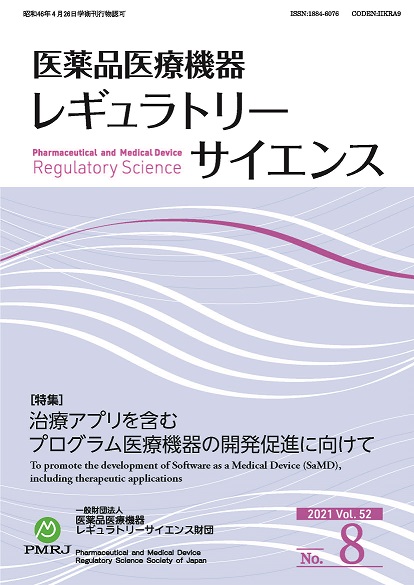Volume 52, Issue 8
Displaying 1-17 of 17 articles from this issue
- |<
- <
- 1
- >
- >|
-
2021Volume 52Issue 8 Pages 600-604
Published: December 10, 2021
Released on J-STAGE: June 24, 2022
Download PDF (354K) -
2021Volume 52Issue 8 Pages 605-608
Published: December 10, 2021
Released on J-STAGE: June 24, 2022
Download PDF (316K) -
2021Volume 52Issue 8 Pages 609-614
Published: December 10, 2021
Released on J-STAGE: June 24, 2022
Download PDF (418K) -
2021Volume 52Issue 8 Pages 615-620
Published: December 10, 2021
Released on J-STAGE: June 24, 2022
Download PDF (920K) -
2021Volume 52Issue 8 Pages 621-624
Published: December 10, 2021
Released on J-STAGE: June 24, 2022
Download PDF (337K) -
2021Volume 52Issue 8 Pages 625-630
Published: December 10, 2021
Released on J-STAGE: June 24, 2022
Download PDF (791K)
-
2021Volume 52Issue 8 Pages 631-633
Published: December 10, 2021
Released on J-STAGE: June 24, 2022
Download PDF (261K)
-
2021Volume 52Issue 8 Pages 634-638
Published: December 10, 2021
Released on J-STAGE: June 24, 2022
Download PDF (319K) -
2021Volume 52Issue 8 Pages 639-642
Published: December 10, 2021
Released on J-STAGE: June 24, 2022
Download PDF (1851K)
-
2021Volume 52Issue 8 Pages 643-645
Published: December 10, 2021
Released on J-STAGE: June 24, 2022
Download PDF (273K)
-
2021Volume 52Issue 8 Pages 646-648
Published: December 10, 2021
Released on J-STAGE: June 24, 2022
Download PDF (257K)
-
2021Volume 52Issue 8 Pages 649-656
Published: December 10, 2021
Released on J-STAGE: June 24, 2022
Download PDF (488K)
-
2021Volume 52Issue 8 Pages 657-661
Published: December 10, 2021
Released on J-STAGE: June 24, 2022
Download PDF (501K)
-
2021Volume 52Issue 8 Pages 662-670
Published: December 10, 2021
Released on J-STAGE: June 24, 2022
Download PDF (788K) -
2021Volume 52Issue 8 Pages 671-674
Published: December 10, 2021
Released on J-STAGE: June 24, 2022
Download PDF (265K) -
2021Volume 52Issue 8 Pages 675-678
Published: December 10, 2021
Released on J-STAGE: June 24, 2022
Download PDF (322K)
-
2021Volume 52Issue 8 Pages 679-689
Published: December 10, 2021
Released on J-STAGE: June 24, 2022
Download PDF (7984K)
- |<
- <
- 1
- >
- >|
